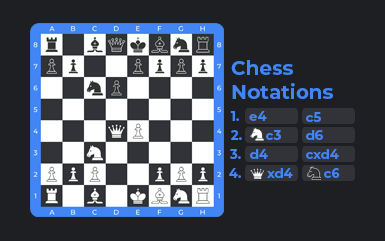
Key Principles of Development in Chess
Key Principles of Development in Chess
For beginners learning chess, understanding the key principles of development can elevate your game from a series of reactive moves to a strategic play. Development is the term used to describe the process of deploying your pieces from their initial positions to more powerful and effective squares. This blog post will cover the core principles to guide you in successfully developing your pieces.
Early Piece Development for Success
The opening stage of the game is crucial for your pieces’ development. You should strive to move each piece only once in the opening to bring as many pieces into play as quickly as possible. By doing so, you’re setting a strong foundation for the middlegame where most of the strategic and tactical battles occur.
Seizing Initiative: Proactive Development
In chess, the initiative refers to the player who is making threats and forcing the opponent to respond. By developing your pieces proactively and creating threats early, you can seize the initiative and dictate the direction of the game. It’s essential to think about how each move contributes to your overall strategy and to stay ahead of your opponent.
Leveraging Pawn Structure for Development
Pawn structure, or the arrangement of your pawns on the board, plays a crucial role in your piece development. It determines the available spaces for your pieces and forms the skeleton of your position. It’s important to advance your central pawns in the opening to control the center and provide paths for your bishops and queen to enter the game.
Coordinated Development: Achieving Harmony
The pieces in chess function best when they work together harmoniously. This means that your piece development should aim for coordination among your pieces, protecting one another and working together to control key squares or launch an attack.
Prioritizing King Safety in Development
One crucial aspect of development is ensuring the safety of your king. This is typically achieved through castling, which also connects your rooks. It’s generally best to delay moving your king’s pawn until after you’ve castled, as it could potentially expose your king to an attack.
Castling: Safety and Rook Activation
As mentioned above, castling not only safeguards your king, but also activates one of your rooks by moving it towards the center. The rook, previously blocked by other pieces, becomes a powerful force once activated.
Dynamic Development: Exploiting Tactical Opportunities
Sometimes, rigidly adhering to principles of development can prevent you from taking advantage of specific opportunities in a given position. Dynamic development involves being flexible and adaptable in response to your opponent’s moves. For instance, you may choose to move a piece twice in the opening to exploit a weakness in your opponent’s position.
Strategic Piece Development and Material Control
Piece development should be purposeful and strategic. Try to develop your pieces to squares where they control key points of the board, particularly the center. In addition, aim to keep as many of your pieces protected as possible. This often means keeping them close together or using pawns for protection.
Flexibility and Adaptability in Development
While it’s important to have a plan, you should also be flexible and ready to adapt your strategy based on your opponent’s moves. This could mean changing which side you’re planning to castle on, or altering your strategy to exploit a weakness in your opponent’s pawn structure.
Accelerating Development with Efficient Moves
Every move counts in chess, and making efficient moves accelerates your development. This could mean developing with a threat, or developing a piece while also freeing another piece to be developed. The key is to make moves that serve multiple purposes whenever possible.
Conclusion
Understanding and applying these key principles of development will greatly improve your chess play. While these rules provide a strong guide, remember that each game of chess is unique and sometimes the best move may require you to bend these principles. As with all skills, practice is key. The more you play, the better you will become at recognizing when and how to best develop your pieces.





 Protected by Patchstack
Protected by Patchstack
Recent Comments